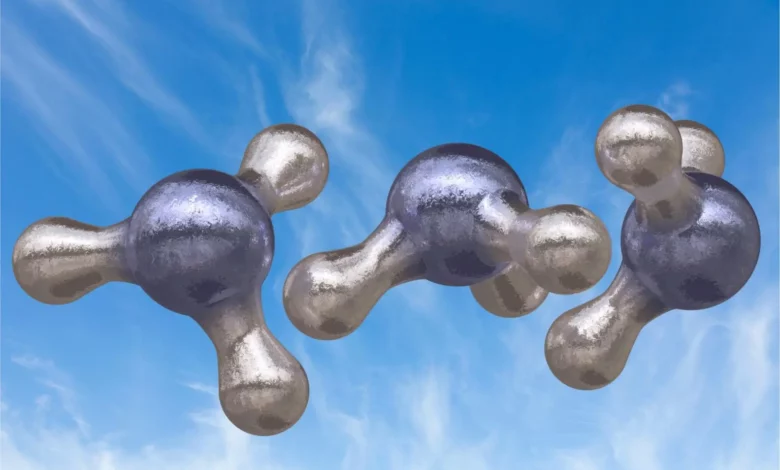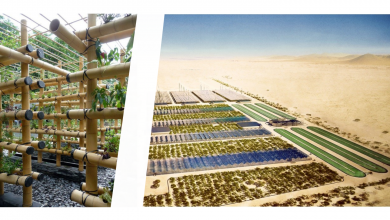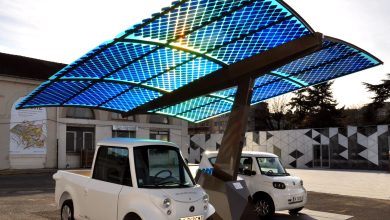
Lead Image: Ammonia is a colorless, pungent gas with the chemical formula NH3. It is a naturally occurring compound that plays an important role in the nitrogen cycle and is used as a building block in the production of fertilizers, plastics, and other chemicals. It is also used as a refrigerant and cleaning agent.
Stanford researchers have found an environmentally friendly method of producing ammonia using small droplets of water and nitrogen sourced from the air.
Ammonia (NH3) serves as the foundation for the creation of chemical fertilizers used for agricultural crops. For over 100 years, the global production of ammonia in large quantities has relied on the Haber-Bosch process. This industrial breakthrough has had a major impact on agriculture, enabling the feeding of a rapidly growing human population. However, the Haber-Bosch process is extremely energy-intensive, requiring high pressure levels of 80-300 atmospheres and temperatures ranging from 572-1000 F (300-500 C) to break nitrogen’s strong bonds. Additionally, the steam-treatment of natural gas involved in the process contributes significantly to the release of carbon dioxide, a key contributor to climate change.
All told, to satisfy the current annual worldwide demand for 150 million metric tons of ammonia, the Haber-Bosch process gobbles up more than 2% of global energy and accounts for about 1% of the carbon dioxide emitted into the atmosphere.
In contrast, the innovative method debuted by the Stanford researchers requires less specialized circumstances.
“We were shocked to see that we could generate ammonia in benign, everyday temperature-and-pressure environments with just air and water and using something as basic as a sprayer,” said study senior author Richard Zare, the Marguerite Blake Wilbur Professor in Natural Science and a professor of chemistry in the Stanford School of Humanities and Sciences. “If this process can be scaled up, it would represent an eco-friendly new way of making ammonia, which is one of the most important chemical processes that takes place in the world.”
The new method also uses little energy and at a low cost, thus pointing a way forward to potentially producing the valuable chemical in a sustainable manner. Xiaowei Song, a postdoctoral scholar in chemistry at Stanford, is the lead author of the study, which was recently published in the Proceedings of the National Academy of Sciences.
New chemistry from blue-sky study
The new chemistry discovered follows in the footsteps of pioneering work by Zare’s lab in recent years examining the long-overlooked and surprisingly high reactivity of water microdroplets. In a 2019 study, Zare and colleagues novelly demonstrated that caustic hydrogen peroxide spontaneously forms in microdroplets in contact with surfaces. Experiments since have borne out a mechanism of electric charge jumping between the liquid and solid materials and generating molecular fragments, known as reactive oxygen species.
Taking those findings further, Song and Zare began a collaboration with study co-author Basheer Chanbasha, a professor of chemistry at King Fahd University of Petroleum and Minerals in Saudi Arabia. Chanbasha specializes in nanomaterials for energy, petrochemical, and environment applications and came to Stanford as a visiting scholar last summer.
The research team zeroed in on a catalyst – the term for any substance that boosts the rate of a chemical reaction but is not itself degraded or changed by the reaction – that they suspected could help blaze a chemical pathway toward ammonia. The catalyst consists of an iron oxide, called magnetite, and a synthetic membrane invented in the 1960s that is composed of repeating chains of two large molecules.
The researchers applied the catalyst to a Graphite mesh that Song incorporated into a gas-powered sprayer. The sprayer blasted out microdroplets in which pumped water (H2O) and compressed molecular nitrogen (N2) reacted together in the presence of the catalyst. Using a device called a mass spectrometer, Song analyzed the microdroplets’ characteristics and saw the signature of ammonia in the collected data.
Low-tech, low-energy ammonia synthesis
Zare and colleagues were very pleased with this result, especially in light of the relatively low-tech approach. “Our method does not require the application of any electrical voltage or form of radiation,” said Zare.
From a broader chemistry perspective, the method is remarkable in that it uses three phases of matter: nitrogen as gas, water as liquid, and catalyst as solid. “To our knowledge, the idea of using gas, liquid, and solid all at the same time to cause a chemical transformation is a first of its kind and has a huge potential for advancing other chemical transformations,” said Zare.
While promising, the ammonia production method revealed by Zare, Song, and Chanbasha for now is only at the demonstration stage. The researchers plan to explore how to concentrate the produced ammonia as well as gauge how the process could potentially be scaled up to commercially viable levels. While Haber-Bosch is only efficient when pursued at huge facilities, the new ammonia-making method could be portable and done on-site or even on-demand at farms. That, in turn, would slash the greenhouse gas emissions related to the transportation of ammonia from far-off factories.
“With further development, we’re hoping our ammonia generation method could help address the two major looming problems of continuing to feed Earth’s growing population of billions of people, while still mitigating climate change,” said Zare. “We are hopeful and excited to continue this line of research.”
Reference: “Making ammonia from nitrogen and water microdroplets” by Xiaowei Song, Chanbasha Basheer and Richard N. Zare, 10 April 2023, Proceedings of the National Academy of Sciences.
DOI: 10.1073/pnas.2301206120
The study was funded in part by the U.S. Air Force Office of Scientific Research through the Multidisciplinary University Research Initiative.





